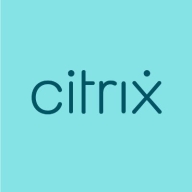

Citrix XenServer and VMware vSphere compete in the virtualization category, where VMware has the upper hand due to comprehensive features and better integration with cloud environments.
Features: Citrix XenServer offers a robust free edition with features such as VM migration, active directory integration, and a Windows-based management interface. VMware vSphere stands out with high availability, extensive security options, and powerful tools for seamless integration with other VMware products.
Room for Improvement: Citrix XenServer needs enhanced integration with third-party tools, better network management, and improved backup solutions, alongside lower licensing costs for advanced editions. VMware vSphere faces issues with high cost and complex licensing, a need for a more streamlined user interface, and improvements in its web-based management tool.
Ease of Deployment and Customer Service: Citrix XenServer is straightforward to deploy, especially on on-premises systems, though customer service may vary with slow support response times. VMware vSphere deploys smoothly across various environments, including hybrid clouds, and offers reliable customer service, notwithstanding its high costs and licensing complexities.
Pricing and ROI: Citrix XenServer's free version is cost-effective for smaller setups, but advanced licenses can be pricey, affecting its appeal. VMware vSphere, despite its high initial costs, offers a strong ROI with efficient resource management, making it suitable for enterprise use though the cost is a consideration for businesses.
My clients generally maintain their Citrix infrastructure without shifting, suggesting stability and reliable operation as Citrix XenServer is fully established.
They do not provide adequate support for midsize businesses.
Customer support can be complex and slow, especially when dealing with Unicom.
Since being acquired, Citrix's customer service has experienced delays in response time.
If we have issues, the support tends to be unreliable
Recently, support has been less friendly and slower, especially after the company was acquired by Broadcom.
Priority one issues are usually addressed by engineers within one to two hours.
Familiarity with Linux can enhance its performance and usability.
Scaling is easy, whether it is hyperconverged or a three-tier architecture.
It is a highly scalable solution.
VMware vSphere is highly scalable in terms of the number of users and the number of servers it can handle.
While they are generally stable, if outages occur, they tend to be due to brands like HP or Dell, not VMware vSphere itself.
It is a very stable hypervisor solution.
I would rate the stability of VMware vSphere as eight out of ten.
Citrix needs to improve the hypervisor, specifically in security and performance.
Although the product is technically competitive, it is not widely known or used due to poor marketing.
Although the product is very strong and includes all necessary features, the high pricing drives many customers to avoid using it.
Another area is the stability during upgrades from older versions to newer versions, where we face issues.
Sometimes, it is difficult to find documentation for specific tools and solutions.
It is cheaper compared to its competitors.
The pricing is considered not expensive.
The pricing and licensing policy of Citrix XenServer is not transparent and quite confusing.
Many customers are trying to avoid it due to its high cost.
Costs significantly increased from perpetual to subscription, with prices rising by two to three times over three to five years.
The solution is too expensive.
It provides secure access to applications and resources, which is crucial for us and our clients.
It is user-friendly and easy to deploy, making it an attractive option.
The tool is highly available, which is crucial for implementing critical applications requiring 24/7 availability.
The vMotion feature is beneficial for online migration of virtual machines from one host to another without downtime.
With vCenter, we efficiently manage a vast number of hosts with just one management tool.


Citrix XenServer is a virtualization platform used in industries such as banking, automotive, and data applications for cloud automation, server virtualization, and VDI scenarios. It supports infrastructure management, virtual machine hosting, and enterprise software deployment, reducing costs by migrating from other platforms.
As a virtualization tool, Citrix XenServer stands out for its ease of maintenance, support, scalability, and centralized management. Commonly deployed on-premises and in data centers, it provides real-time monitoring, live migration, and strong security features. With compatibility across many operating systems, users benefit from a Windows-based management interface that is easy to install and navigate. Integration capabilities with active directory, storage, and load balancing contribute to resource optimization and reliability.
What are the key features of Citrix XenServer?Implementation in banking, automotive, and data applications leverages Citrix XenServer's strengths in cloud automation and virtualization. Organizations manage resources, deploy services, and ensure stable operations within their infrastructure. The platform is used both on-premises and in data centers, aiding in areas such as cost reduction and maintenance efficiency.
VMware vSphere is a versatile virtualization platform known for its ease of use, flexibility, and high availability. It supports seamless migration, optimal resource allocation, and centralized management, making it highly suitable for diverse infrastructure needs.
VMware vSphere is widely adopted for its virtualization capabilities that enhance hardware efficiency and ensure minimal downtime through features like High Availability and Distributed Resource Scheduler. Despite criticisms about high licensing costs and limited fault tolerance, it remains a preferred choice due to its stability, scalability, and robust integration options. Users appreciate its efficiency in managing virtual machines and hosting enterprise applications, although challenges with web client performance and hardware compatibility are noted. Organizations often look for better integration with cloud services and enhanced automation and scalability.
What are the core features of VMware vSphere?VMware vSphere is implemented across sectors like healthcare, finance, and education for server virtualization, data center management, and private cloud creation. Its use in facilitating business-critical operations ensures high availability and efficient resource use, supporting both development and production environments.
We monitor all Server Virtualization Software reviews to prevent fraudulent reviews and keep review quality high. We do not post reviews by company employees or direct competitors. We validate each review for authenticity via cross-reference with LinkedIn, and personal follow-up with the reviewer when necessary.